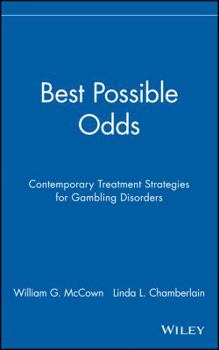Best Possible Odds: Contemporary Treatment Strategies for Gambling Disorders
An estimated 3-5% of all individuals who gamble will become compulsive gamblers. This "invisible addiction" can be financially and emotionally devastating to both the gambler and his/her family. This timely clinical manual explains why gambling is on the rise and the factors which distinguish recreational and compulsive gamblers. Mental health professionals will learn how to assess and treat compulsive gamblers using a variety of interventions: behavior...
Format:Hardcover
Language:English
ISBN:0471189693
ISBN13:9780471189695
Release Date:March 2000
Publisher:Wiley
Length:260 Pages
Weight:0.80 lbs.
Dimensions:0.9" x 6.5" x 9.6"
Related Subjects
Addiction & Recovery Clinical Psychology Compulsive Behavior Gambling Games Health, Fitness & Dieting Health, Fitness & Dieting Humor & Entertainment Mental Health Politics & Social Sciences Psychology Psychology & Counseling Psychopathology Puzzles & Games Social Sciences Social Work Substance AbuseCustomer Reviews
0 rating





